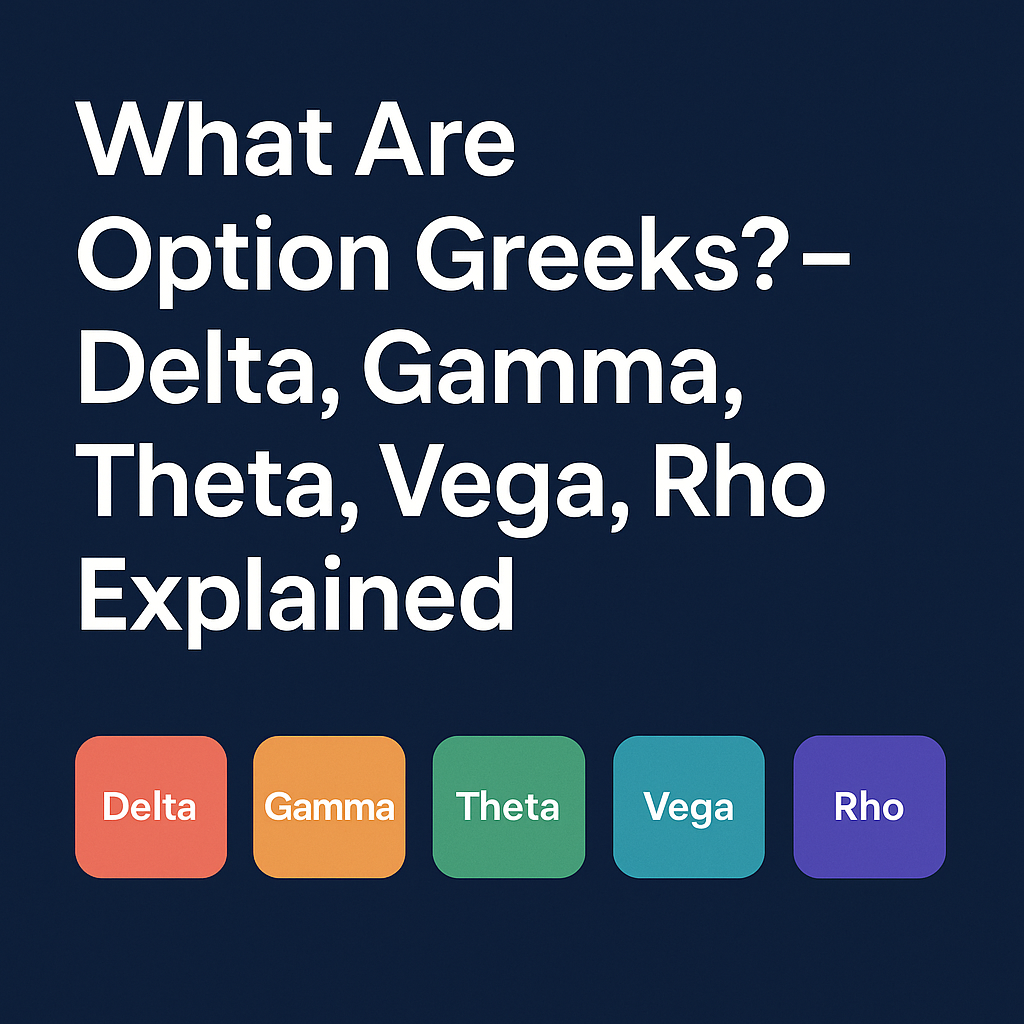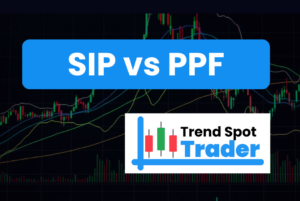
What Are Option Greeks? A Complete Guide for Traders
Options trading can be highly profitable, but it comes with risks. To manage these risks effectively, traders rely on Option Greeks—a set of metrics that measure how different factors impact an option’s price.
In this guide, we’ll break down the five key Option Greeks—Delta, Gamma, Theta, Vega, and Rho—and explain how they influence your trading decisions.
What Are Option Greeks?
Option Greeks are mathematical calculations that help traders assess the risks and sensitivities of an options contract. They measure how factors like price movements, time decay, volatility, and interest rates affect an option’s value.
Understanding these metrics allows traders to:
- Predict price changes more accurately
- Hedge against potential losses
- Optimize entry and exit strategies
Now, let’s dive into each Greek.
1. Delta (Δ) – The Directional Risk Indicator
Delta measures how much an option’s price changes relative to a $1 move in the underlying asset.
- Call Options: Delta ranges between 0 and 1 (e.g., a Delta of 0.5 means the option gains $0.50 if the stock rises by $1).
- Put Options: Delta ranges between -1 and 0 (e.g., a Delta of -0.3 means the option gains $0.30 if the stock falls by $1).
Key Takeaways:
✅ Near 1 or -1: The option behaves like the underlying stock.
✅ Near 0: The option is less sensitive to price changes.
✅ Used for hedging: Traders adjust positions based on Delta exposure.
2. Gamma (Γ) – The Rate of Change of Delta
Gamma measures how quickly Delta changes as the underlying asset moves.
- A high Gamma means Delta is highly sensitive to price changes.
- Gamma is highest for at-the-money (ATM) options and decreases as options go deeper in or out of the money.
Key Takeaways:
✅ Helps traders adjust hedges dynamically.
✅ Important for short-term traders dealing with rapid price swings.
3. Theta (Θ) – The Time Decay Factor
Theta measures how much an option loses value each day as expiration approaches.
- Theta is negative for option buyers (time works against them).
- Theta is positive for option sellers (they benefit from time decay).
Key Takeaways:
✅ Accelerates as expiration nears.
✅ Critical for day traders and sellers of premium.
4. Vega (ν) – The Volatility Sensitivity
Vega measures how much an option’s price changes with a 1% shift in implied volatility (IV).
- Higher Vega = Greater sensitivity to volatility changes.
- Vega is highest for long-dated options and decreases near expiration.
Key Takeaways:
✅ Important for straddles and strangles (volatility-based strategies).
✅ Traders monitor Vega to predict earnings or news-driven price swings.
5. Rho (ρ) – The Interest Rate Sensitivity
Rho measures how much an option’s price changes with a 1% change in interest rates.
- Call options have positive Rho (higher rates increase their value).
- Put options have negative Rho (higher rates decrease their value).
Key Takeaways:
✅ Less impactful for short-term traders.
✅ More relevant for long-term LEAPS options.
How to Use Option Greeks in Trading
- Delta + Gamma: Manage directional risk and adjust hedges.
- Theta: Optimize strategies for time decay (e.g., selling options).
- Vega: Trade around earnings or high-volatility events.
- Rho: Consider interest rate impacts for long-term holdings.
Final Thoughts
Option Greeks are essential tools for managing risk and maximizing returns in options trading. By understanding Delta, Gamma, Theta, Vega, and Rho, you can make more informed decisions and refine your strategies.
Want to master options trading? Keep analyzing these Greeks and practice with paper trading before risking real capital!
FAQs
Q: Which Greek is most important for day traders?
A: Theta and Gamma are crucial due to rapid time decay and price movements.
Q: Do Option Greeks work for all strategies?
A: Yes, but their importance varies—e.g., Vega matters more for volatility plays, while Theta is key for selling options.
Q: Can Greeks predict exact option prices?
A: No, but they help estimate risks and sensitivities.





